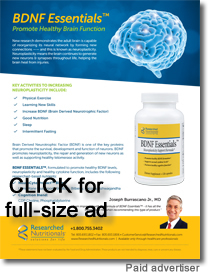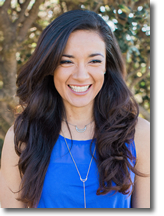Page 1, 2
Diagnosis
The differential diagnosis includes mitochondrial dysfunction, psychogenic non-epileptic seizures, drug-induced symptomology, drug-induced parkinsonism, vasovagal response and syncope, and systemic infection secondary to oral microbial toxins. The working diagnosis being late post-traumatic seizures, considering there was an initial head trauma involved and no pertinent family history, as well as, diagnoses of fatigue due to old head trauma, and chronic mucus hyper-secretion.
Treatment and Future Plan
On the initial visit, the take home plan involved a three-day diet diary including bowel movements, water intake, physical activity, and mood. Patient was instructed to increase his water intake. The patient, his wife, and the naturopathic team agreed to research medical doctors in the area qualified and experienced in safely weaning off anti-seizure medication and prescribing and dosing with CBD oil.
Three weeks later the patient reports that him and his wife and the naturopathic team had both coincidentally decided on the same medical doctor in the area. Patient had begun to decrease his anti-seizure medication and had started taking 15 mg of CBD oil twice per day the night before the second visit. Patient reported that his morning walk went noticeably better than usual. After reviewing his diet diary, we strongly suggested he completely eliminate inflammatory foods such a gluten and dairy. The patient was asked to begin the ketogenic food plan in order to encourage healthy energy production and removal of offending foods. A handout and complete instructions by Institute for Functional Medicine on a mitochondria-supporting diet were provided. The patient was asked to carefully observe the changes he experiences for the next two weeks with the new diet changes and with daily doses of CBD oil.
Six weeks after beginning treatment with CBC oil and discontinuing levetiracetam, we recommended alternating 'smooth move' tea, initially used to aid in producing daily bowel movements, with organic psyllium fiber. Patient had eliminated dairy from his diet, with only occasional goat cheese, and increased his daily proportion of vegetable intake. An internal referral was made for intravenous therapy (IV) infusion therapy for nutrient and glutathione antioxidant support for the purpose of preventing further neuro-degeneration due to TBI and medication, and to provide powerful antioxidant protection to his central nervous system.11
Future treatment may involve the consideration of acetylated glutathione, if IV therapy is less preferred by patient. Future treatment may also involve CoQ10 supplementation and respiratory chain cofactors, such as, riboflavin, tocopherol (vitamin E), succinate, ascorbate (vitamin C), menadione, and nicotinamide. It is also highly indicated to address sleep, immune modulation, dental hygiene, past and current environmental exposures, and the consideration of homeopathy as adjunctive treatment.
 Outcomes Outcomes
Subjective patient recall after only one day of CBD oil and discontinuation of levetiracetam shows he is slightly more physically able. Upon six-week follow up, patient reported improved mucus production and change in color of mucus from yellow to clear. Patient continues to wake at night from excess mucus production, which he manages with mouthwash; otherwise, he reports improved sleep with recent negative sleep study results. Patient reports a decrease in resting and postural tremors, which he attributes to the change in medication. Patient's chief complaint of fatigue remains the same despite these changes, though patient has once again began to do physical exercise twice per day, including Pilates and weight lifting. Patient continues to be seizure free without the help of AEDs. The patient seems very hopeful about this treatment and plans to continue to return to Bastyr University for follow-up treatment.
Discussion
Research has shown that when CBD is taken orally, it has a bioavailability as low as 6% after it has undergone first-pass metabolism, with a half-life of only one-to-two days. CBD is a powerful inhibitor of cytochrome P450 isozymes; therefore, caution should be taken when paired with medications.5 For this reason, it was of great importance to find a medical professional who is trained and experienced in not only pharmaceuticals, but also in CBD.
The patient may likely experience benefits from a consistent ketogenic diet, which includes high-fat, low-carbohydrate diet, and high antioxidant content. The ketogenic diet not only aids in neuroprotection and seizure control, it is now understood that it may also improve mitochondrial redox status. A 2008 study in rats, showed an increase in hippocampal mitochondrial glutathione (GSH) production, increase enzymatic activity of glutamate cysteine ligase, increased hippocampal reduced CoA, and lipoic acid, as well as a decrease in H2O2 production and mtDNA damage. There are indicators that the ketogenic diet aids in GSH biosynthesis, enhances mitochondrial antioxidant status, and protects mDNA from oxidative damage.3 It is important in this case to also consider the long-standing side effects of not only the initial TBI, but also the effects of the anti-seizure medications taken for several years. Though the patient is 85 years old, the Parkinson-like symptoms he is now experiencing are a drastic change from the physical and mental ability that he had just prior to taking medications. In the Substancia Nigra – the area in the brain impacted in Parkinson's disease – the antioxidant defenses are more vulnerable to low levels of GSH than other areas of the brain.13 It is possible that the neuro-damage from the TBI and from the AEDs has lowered the intrinsic oxidant defenses in his brain making him susceptible to potential drug-induced parkinsonism.
Diagnostic Process and Outcomes of Disease
Post-traumatic epilepsy (PTE) is considered 'late' when seizures occur more than one week after head injury and 'early' if they occur within the first week of injury. Late post-traumatic seizures often present with more permanent structural and physiological changes to the brain typical of a TBI. Of those suffering from PTE, up to 80% will experience a seizure within two years. Those with more severe TBIs are at risk for late-PTE for a longer span of time; a mild TBI leaves a patient at risk for five years versus a severe TBI with a 20-year risk. Risk of recurrent seizures without treatment is up to 86% in the first two years. For this reason, long-term anticonvulsant medication is recommended for patients with an initial seizure and used prophylactically for patients at risk of seizures who experience a TBI. Over 13% of patients with prophylactic anti-seizure drug trials had seizures even with aggressive pharmaceutical treatment. The remission rate for PTE is about 25 to 40% with initial anti-seizure treatment.12
Limitations and Biases
This particular case is still in progress and may require time in order to investigate the impact that both anti-seizure medication and CBD oil may have on symptoms. It is still unclear how severe and how long-lasting the side effects of the medications are, and whether these changes are permanent. Future studies investigating the impact of CBD oil as initial treatment or as initial adjunctive treatment have yet to be studied. Most medical doctors in California do not advocate the use of any cannabis products and do not offer this as an option to patients as part of the treatment regimen for epilepsy. Many people suffering from seizure disorders and epilepsy are not made aware of the potential benefits of CBD through the medical system. Most studies on human trials have focused on children and have not demonstrated the effects on adults and seniors. Further research on the impact that CBC oil may have on seniors with epilepsy, as well as a comparison of effects between anti-seizure pharmaceuticals and CBC oil is indicated.
Conclusion
It is still unclear whether this patient will experience complete remission from seizures from the transition from leveteracitam to daily doses of CBD oil capsules. There are many variables to consider that may have contributed to the patient's symptoms of fatigue, seizures and excess mucus production; therefore, it may take months to assess complete effects of the given treatment. Potential modifications of treatment based on individual need may be necessary. The patient demonstrates a great desire to recover from the side effects of the various anti-epileptic medications he has taken in the span of four years; his persistence and the support from his wife is not to be under-estimated as a significant factor in his recovery. The patient has received careful guidance on weaning off of anti-epileptic medication and dosing with CBD oil by his medical doctor, in conjunction with guidance by a naturopathic team, who is addressing the side effects from the TBI and pharmaceuticals through a ketogenic diet and antioxidant support. This may provide a good foundation for neuro-regeneration and complete seizure remission. Future research on the impact of these therapies on the elderly population are in great need.
Page 1, 2
References
1. Choi H, Mendiratta A. Treatment of seizures and epilepsy in older adults. UpToDate.com [Internet]. [Updated: 2016 July 15; Cited:2017 August 11].
2. Tzadok M. CBD-enriched medical cannabis for intractable pediatric epilepsy: The current Israeli experience. Seizure. 2016 Feb;35:41-4.
3. Jarrett S, et al. Ketogenic diet increases mitochondrial glutathione levels. J Neurochem. 2008 Aug;106(3):1044-51.
4. Schachter SC. Evaluation and management of the first seizure in adults. UpToDate.com [Internet]. [Updated: 2017 February 21; Cited:2017 August 11].
5. Reddy D, Golub, V. The Pharmacological Basis of Cannabis Therapy for Epilepsy. J Pharmacol Exp Ther. 2016; 357:45–55; Senchi G, et al. Intravenous Glutathione in the Treatment of Early Parkinson's Disease. Prog Neuropsychopharmacol Biol Psychiatry, 19(7), 1159-70
6. Kang H, Lee Y, Kim H. Mitochondrial disease and epilepsy. Brain and Development, 2013; 35(8): 757-761.
7. Bellissima M, et al. Superoxide dismutase, glutathione peroxidase activities and the hydroperoxide concentration are modified in the hippocampus of epileptic rats. Epilepsy Research 46 (2001), 121–128.
8. California Naturopathic Doctors Association. Scope of Practice of California Naturopathic Doctors. [Updated: 2013; Cited 2017 August 17]. www.calnd.org
9. Fountain N. The Relevance of the DEA for Epilepsy. [Updated: 2015 March 18; Cited:2017 August 17]. Available from: http://www.epilepsy.com/article/2015/3/new-role-dea-epilepsy
10. Surges R, et al. Is levetiracetam different from other antiepileptic drugs? Levetiracetam and its cellular mechanism of action in epilepsy revisited. Ther Adv in Neuro Disor. 2008;1(1): 13-34.
11. Senchi G, et al. Reduced intravenous glutathione in the treatment of early Parkinson's disease. Prog Neuropsychopharmacol Biol Psychiatry. 1996;20(7): 1159-70.
12. Evans RW, Schachter SC. Post-traumatic seizures and epilepsy. UpToDate.com. [Updated: 2017 April 04; Cited:2017 August 11].
13. Smeyne M, Smeyne RJ. Glutathione metabolism and Parkinson's disease. Free Radic Biol Med. 2013;62:13-25.
 Dr. Fernanda Moreno is a naturopathic doctor. She graduated with honors from Chapman University, where she competed in NCAA diving and water polo, in 2012 with a bachelor's degree in health sciences with an emphasis in complementary and alternative medicine. Dr. Moreno received her doctorate in naturopathic medicine in 2018 from Bastyr University California where she focused her studies in physical medicine, mental health, and women's health. Dr. Moreno has received extensive training in craniosacral therapy, environmental medicine, and homeopathy. Dr. Moreno is a certified yoga instructor and certified swimming instructor and is passionate about teaching communities of all ages. She will continue expanding her education as she pursues a Master's in Public Health. Dr. Fernanda Moreno is a naturopathic doctor. She graduated with honors from Chapman University, where she competed in NCAA diving and water polo, in 2012 with a bachelor's degree in health sciences with an emphasis in complementary and alternative medicine. Dr. Moreno received her doctorate in naturopathic medicine in 2018 from Bastyr University California where she focused her studies in physical medicine, mental health, and women's health. Dr. Moreno has received extensive training in craniosacral therapy, environmental medicine, and homeopathy. Dr. Moreno is a certified yoga instructor and certified swimming instructor and is passionate about teaching communities of all ages. She will continue expanding her education as she pursues a Master's in Public Health.
|
![]()
![]()
![]()
![]()







 Dr. Fernanda Moreno is a naturopathic doctor. She graduated with honors from Chapman University, where she competed in NCAA diving and water polo, in 2012 with a bachelor's degree in health sciences with an emphasis in complementary and alternative medicine. Dr. Moreno received her doctorate in naturopathic medicine in 2018 from Bastyr University California where she focused her studies in physical medicine, mental health, and women's health. Dr. Moreno has received extensive training in craniosacral therapy, environmental medicine, and homeopathy. Dr. Moreno is a certified yoga instructor and certified swimming instructor and is passionate about teaching communities of all ages. She will continue expanding her education as she pursues a Master's in Public Health.
Dr. Fernanda Moreno is a naturopathic doctor. She graduated with honors from Chapman University, where she competed in NCAA diving and water polo, in 2012 with a bachelor's degree in health sciences with an emphasis in complementary and alternative medicine. Dr. Moreno received her doctorate in naturopathic medicine in 2018 from Bastyr University California where she focused her studies in physical medicine, mental health, and women's health. Dr. Moreno has received extensive training in craniosacral therapy, environmental medicine, and homeopathy. Dr. Moreno is a certified yoga instructor and certified swimming instructor and is passionate about teaching communities of all ages. She will continue expanding her education as she pursues a Master's in Public Health.